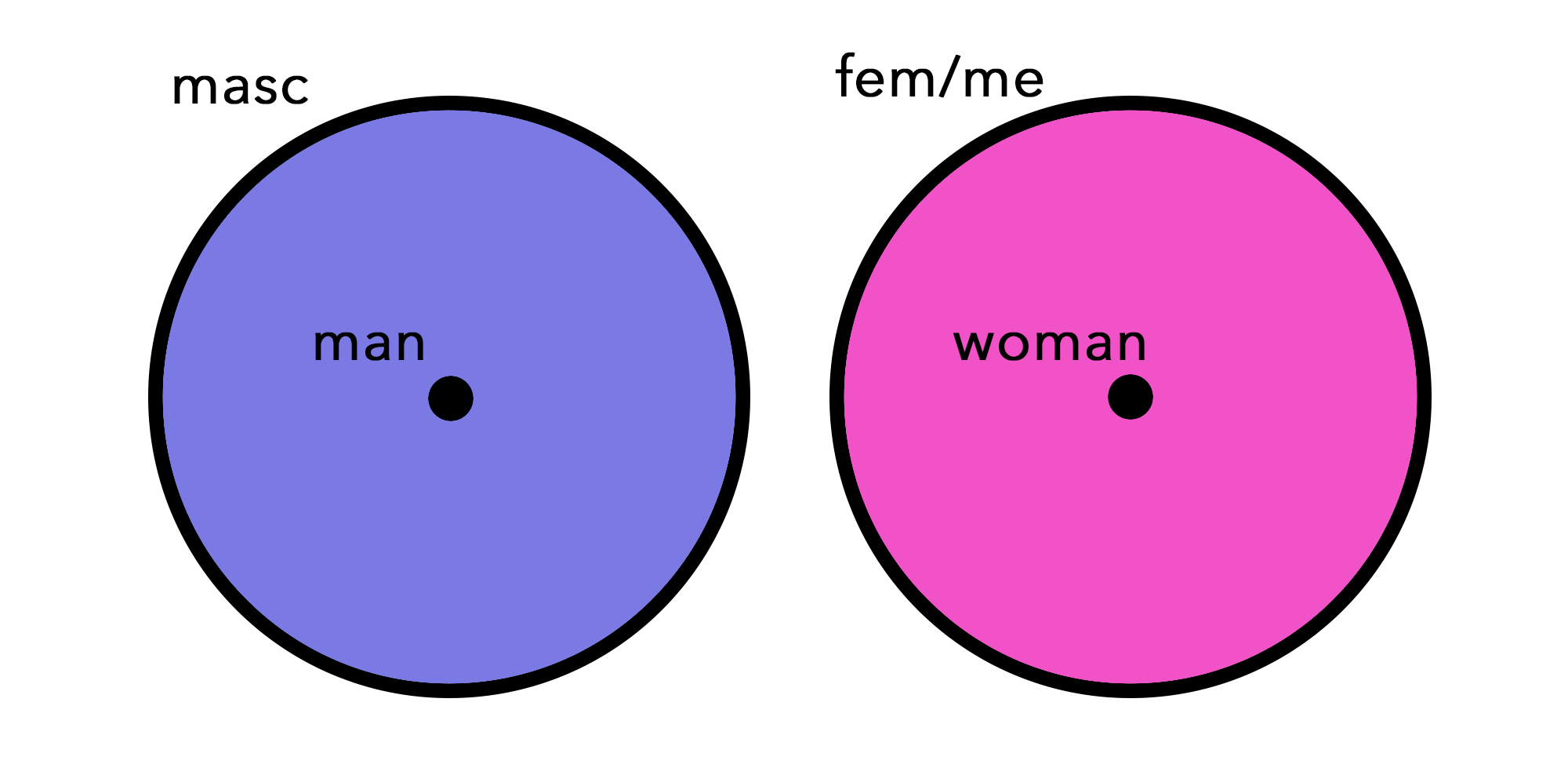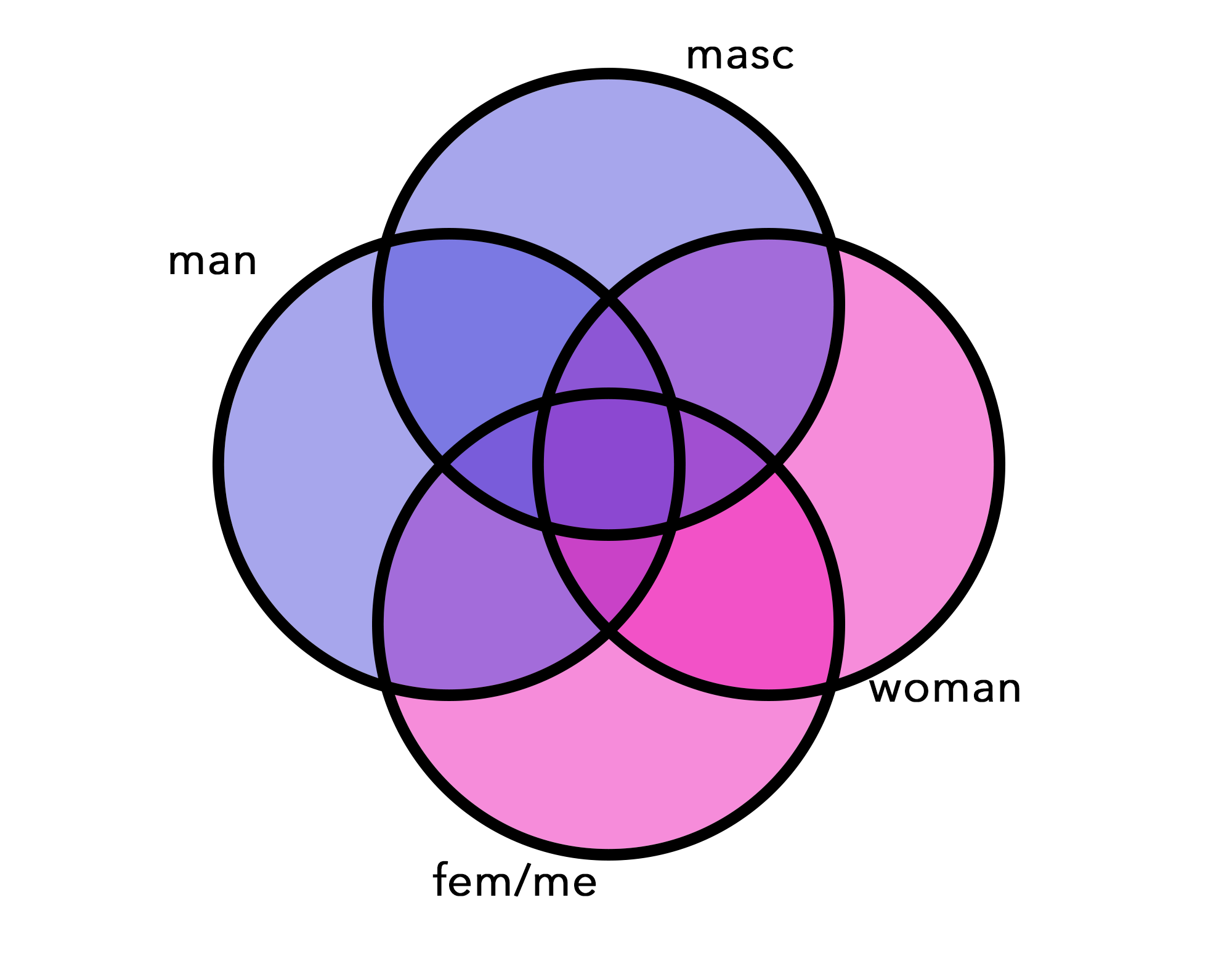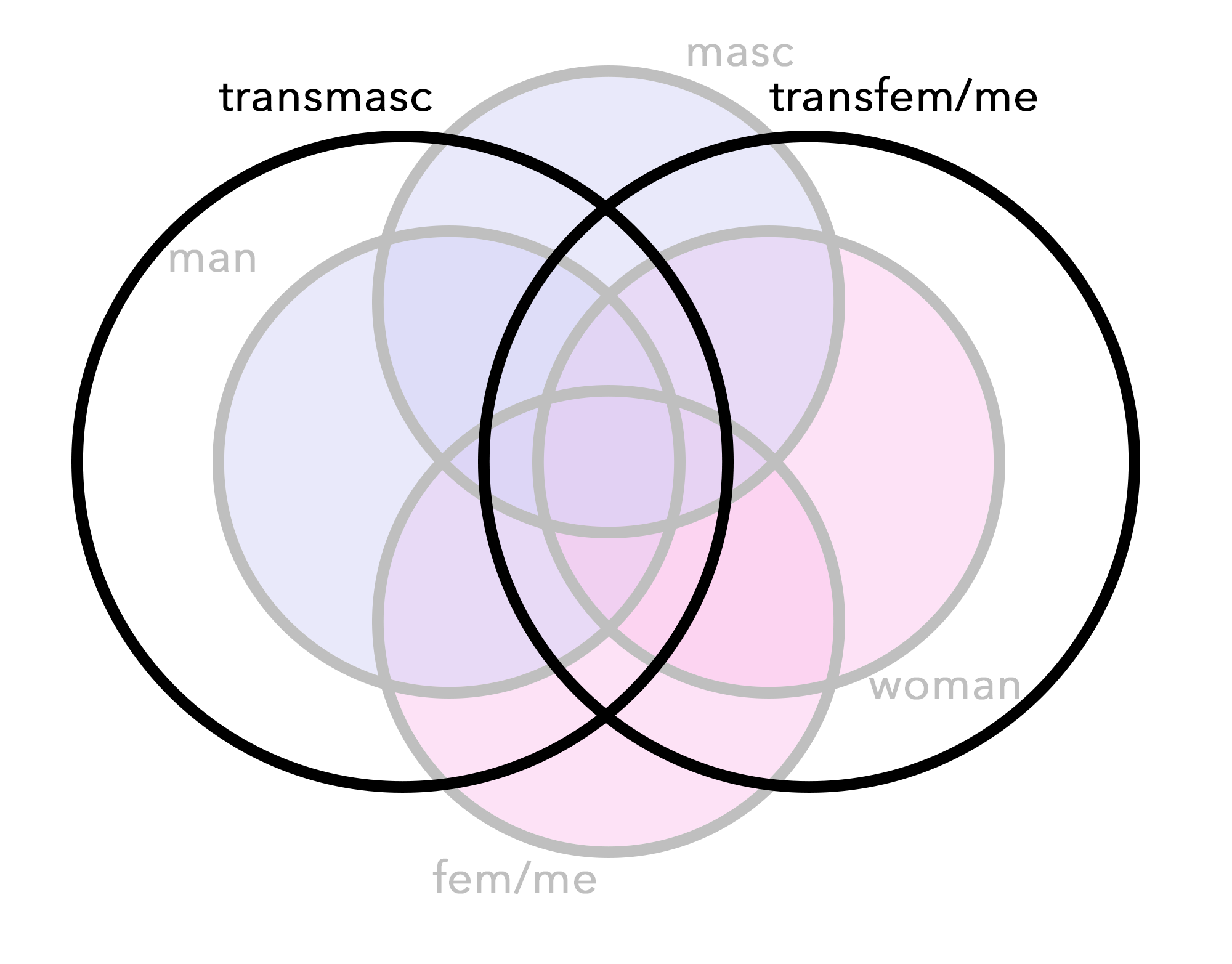Recently there’s been an increase in usage of words “masc” and “fem” or “femme” in the section of the trans community that I frequent. I disagree with how these words are interpreted.
When many people say “masc” or “fem” as a general term denoting a category of a person, they mean something like this:

These words are treated like vague extensions around binary male and female genders. This mindset is the origin of the phrase “women and femmes” that has been widely criticized across the queer community already.
The way I propose to change this image is like this:

Femme and masc are modes of gender presentation that may not necessarily correspond to gender identities. They may be gender identities on their own too, but they are not vague blobs around manhood and womanhood.
In addition to that, if all people in our diagram are trans, we can add “transmasculine” and “transfeminine” terms as well:

“Transmasculine” and “transfeminine” are categories that unite everyone who is a trans man/trans woman and adjacent. Being adjacent may mean a gender identity that’s near a binary gender, e.g. demiboy, or undergoing transition, typical for a binary gender, e.g. taking testosterone as a butch woman. This is how these terms were used in practice during active formation of the transunity movement (now on hold because some of the leading members were subjected to harassment), and it makes the most sense when discussing similarity of experiences and oppression.
Coinciding with a gradual decrease of conversations around transunity, the term “transmasculine” underwent changes – people started saying “trans men and transmascs” first, and then it morphed into “trans men and mascs” (sometimes “trans m&ms”, which is its own can of worms). I believe this to go against the initial purpose of the word “transmasculine”, already inherently inclusive of the trans man identity. This reframing poses a question – who is a “masc”? Is a butch trans woman included in “trans men and mascs”? Is a feminine male-aligned nonbinary person excluded? Or are we using “masc” and “fem” as extensions around manhood and womanhood again, ignoring their other meaning as gender presentations? That would lead to assuming a woman cannot be masc without being nonbinary.
An obligatory disclaimer that these images are all oversimplifications, the size proportions are not based on any statistics, and a lot is missing. It does approximately illustrate my opinions though.
Leave a Reply